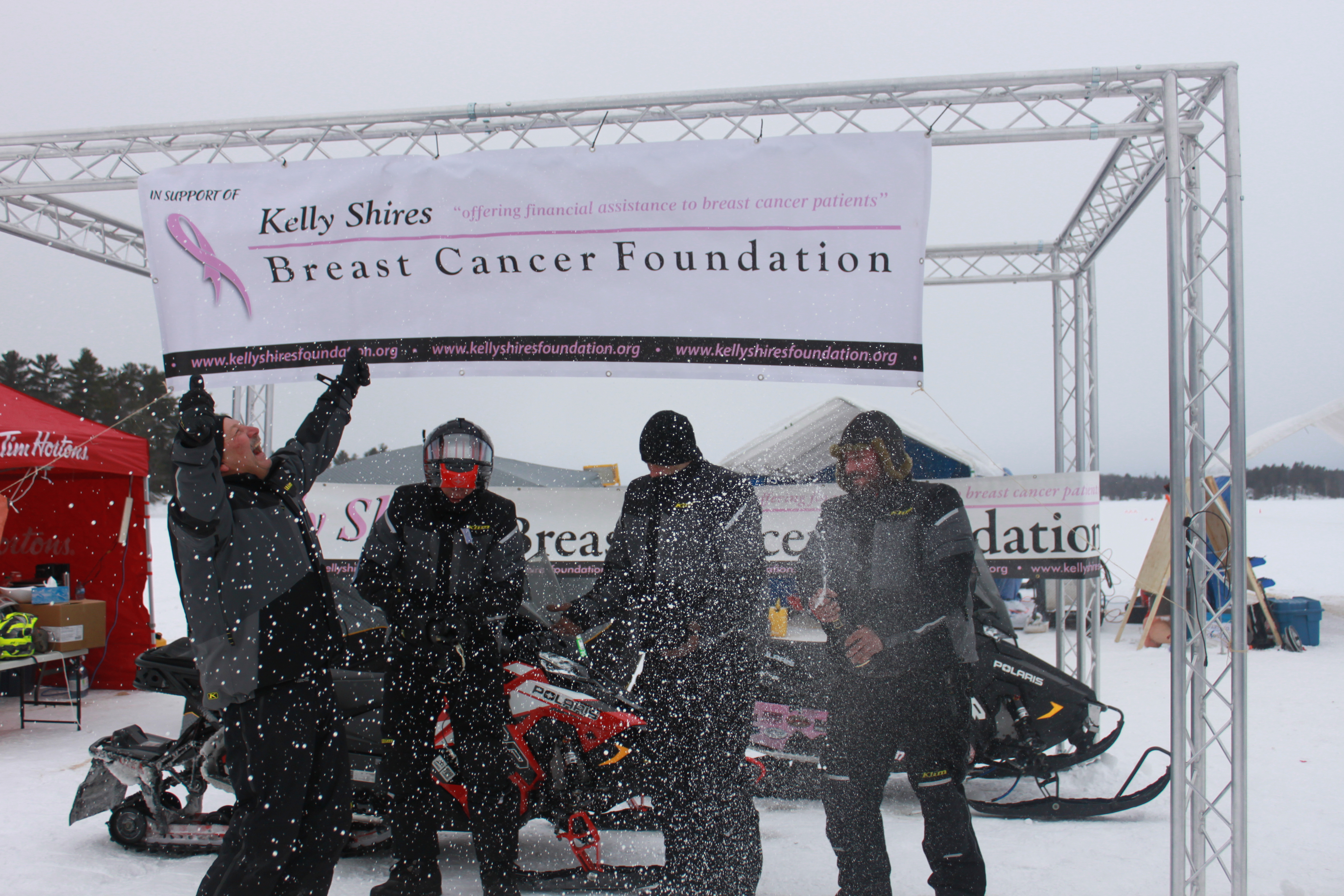TOWNSHIP OF MUSKOKA LAKES, ON – Muskoka will be in the 2021 edition of the Guinness Book of World Records thanks to four snowmobilers.
Earlier this year Muskoka Lake was the scene where the record for greatest distance travelled on a snowmobile in 24 hours by a team was broken.
On February 27th, Claus Zander, David Traill, Richard Lys and Wesley Juszku travelled 3,350.38 km to make history. The group set up a course in the shape of an oval on the lake to make sure they could prove to Guinness exactly how far they were travelling.
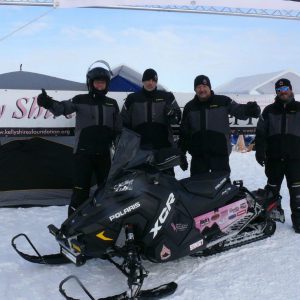
Zander sat down with MyMuskokaNOW.com to talk about setting the record. According to Zander, the dream started over three years ago at a Home Hardware in Cookstown. He said the owner knew Nicholaus Musters who owns the same record for an individual.
“It just sparked something in me,” Zander said. “As a kid, I used to read the Guinness Book of World Records and it got the wheels turning. Eventually, they introduced me to Musters and we had a lot of chats.”
Zander said it took a few years to get the right weather on Lake Muskoka. The first attempt was in 2017 when Zander said the water just never froze over well enough to go for the record.
The group thought it was a go in 2018 when they were able to set everything up. After a few practice runs though, they had to abort the mission because they were essentially riding on bare ice.
“We were going into the corners doing practice laps and you’d catch and then you’d slide and start fishtailing,” Zander said. “It was just too dangerous because to break the record, we needed to be riding in excess of 100 miles per hour. It was really intense and hard to make the call, but it just wasn’t safe.”
The stars finally aligned for the group in February this year. A storm came in that wreaked havoc for drivers on roads but was a blessing for the record attempt.
“That was when there was a huge pileup with dozens of cars on Highway 11 and another on Highway 400,” Zander said. “We were supposed to go that day, but we couldn’t so we waited and started at 10 a.m. on the Tuesday.”
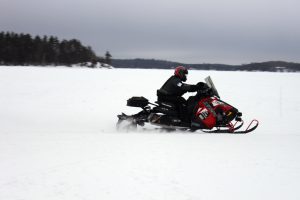
Even with perfect conditions, Zander said the ride was still intense and none of the four got much sleep. The crew went in shifts of roughly 45 minutes, switching whenever the sled needed to be refuelled.
There wasn’t much of a break for the riders though because whoever was getting off had to tell the others how the track was handling and whoever was on deck had to be prepared for their next ride.
‘There was really only one shift where you had actual break time but that got gobbled up in the excitement,” Zander said. “We also had to find efficiencies during our time off because we’d be ahead of the record and then blow a belt, so we’d be behind the record and then built up time to get ahead of it again. It just kept going back and forth.”
Zander said he had maybe one hour of sleep during the run. That combined with no sleep six hours before they started and then the 12 hours after the run ended meant he had only the single hour of sleep over a roughly 40-hour span.
The hardest part may have been in the months after. Zander said since the group didn’t know exactly when the run would happen, there was no Guinness official present. So the organization kept asking for more evidence to make sure the record was legitimate, which in turn, built more anticipation anxiety.
The group had a GPS tracker on the snowmobile, GoPro cameras videotaping every corner they took and
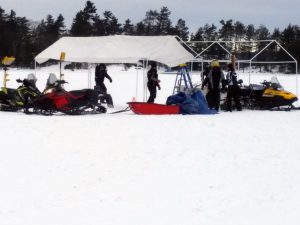
other cameras designated to record every pitstop.
Zander said even though it took over three years and two cancellations for the record to come to fruition, the group never lost its ambition.
“We were pretty excited to challenge a world record. It’s a big thing,” Zander said. “The most disheartening part was pulling the plug within hours of going in 2018 but we were pumped up to do this.”
The best part of the whole experience may not have even been breaking the record. The crew raised over $22,000 for the Kelly Shires Foundation, which supports women with breast cancer.
“In a way, we had already won after crossing that start line by achieving those funds,” Zander said.
The group chose the charity because they believe in the organization’s cause and it was the same one Musters rode for when he broke the individual record.
Of course, finally getting the certificate from Guinness was a solid experience for the group too.
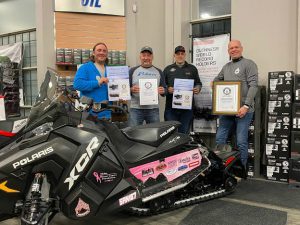
“We couldn’t believe it at first,” Zander said. “We sent an email blast right away to the riders and all the key sponsors. It was great to finally have done it. We got it, we have a new world record. If you look online we’re on it, our names are there.”
The group will have to wait a year before seeing their names in the book itself though. Zander said Guinness already printed the 2020 edition before they could get into, but they’ll be in the 2021 version.
Zander ended his interview with MyMuskokaNOW.com by making sure every volunteer who helped out knew that none of it would have been possible without them. He said it took dozens of people and every one of them played a crucial role in creating history.



